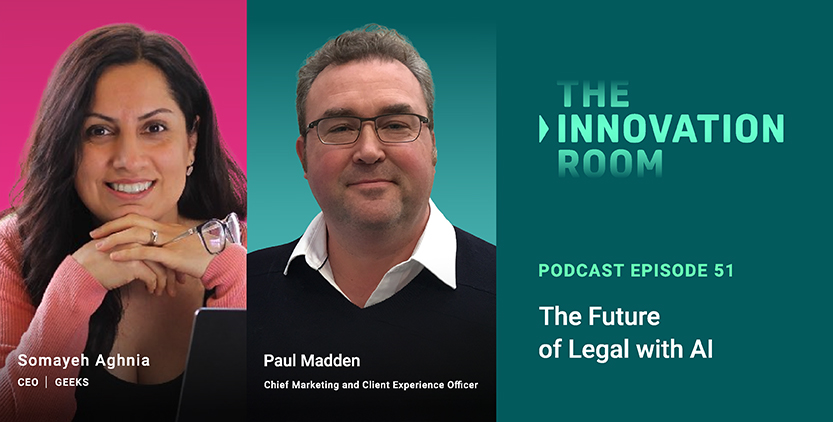
A digital transformation that doesn't fail
As a business leader, how do you “feel” when you see the Digital Transformation on the meeting agenda? Do you feel excited and energised? Or do you feel disoriented and confused? Do you feel in control and confident? Or do you feel it’s hard to see the light at the end of the tunnel?
Well, you might not be alone. Fatigue from continuous change is one of the major reasons the digital transformation programmes fail. Failure to deliver real business value is the second one.
In the ever-changing world of business, making sure you commit to a decision that results in a transformation that is still relevant by the time it is delivered, may seem a hard task. Especially if it involves technology and particularly if you are not a geek (i.e. technologist) yourself.
As the CEO of Geeks, and in over 15 years of experience of working with business leaders, I see 3 factors that are making the biggest impact on the success of the Digital Transformation programs. The leaders that I have seen to be successful, all have demonstrated these 3 factors strongly.
The “right mindset”; develop & maintain it at all times
Since it’s a journey and not a destination, you need to guard it with some principles that guide everyone along the way.
A set of principles that will help you to make better decisions when you will have to choose between two good options or two competing priorities, and trust me there will be plenty of times that you will come to that point in your digital transformation programme.
Develop your set of principles (commandments) based on:
- your business core values and
- 3–5 years of business plans and
- review them annually
This will create accountability for the whole team involved (internally and externally).
An effective way that I have tested with some of our clients at Geeks, is based on the Action-Oriented Change Framework. It’s a simple framework where you outline:
- what is the goal (the change, the reason you are doing the digital transformation)
- the current situation (how things look like or feel now)
- the future situation (how you expect things to be after the change is implemented fully)
- what you will have to preserve through this change, what are your red lines (things that shouldn't be impacted) and what are the things you can compromise on.
- what are the first set of actions to be taken to make this happen
The principles should manifest themselves once you have done steps 1–4. An example could be:
- push the boundaries
- make processes more efficient
- keep the headcount the same
There is no right or wrong when it comes to setting these principles. Like company core values or business vision, one that is right for a business at a time can become irrelevant/ineffective in the future. The metric is how effective these are to guide your decision making along the way.
As you will be measuring the ROI after implementing each phase of your digital tranformation programme, you can see how effective these principles are (as long as the whole team has respected them at all times when making decisions).
For example, the set above will result in taking some decisions that, at least temporarily, might create challenging staff experience as they will be pushing boundaries and changing processes while going through digital transformation. The business that decides to set them as their principles, needs to grow and change as a business at the same time.

The “next right step”; find it and focus on it
One of the biggest challenges you will face, continuously, is prioritising the initiatives and the demands.
The more successful your digital transformation programme becomes, this will become a bigger challenge. Partly because the business demands more, and partly because you and your team (internal and external) will become more excited and confident to take on more.
Keep taking the “next right step”, and evaluate and measure in between. Remember, it’s a journey. You will learn so much about the technology, the requirements, your business processes, your team strength, and weaknesses, etc so you have to keep measuring and evaluating and finding the “next right” step to take.
What seems to be the right path on day one, will not (and should not) be the right path once you have delivered the first part of the roadmap. If the first part of the roadmap is chosen correctly and implemented correctly, then the impact should result in new and better understandings and open up new possibilities that need to be evaluated before you take the next action. The “next right” starting point might change as a result.
By doing this right, you should find yourself on a never-ending journey. One that opens up new opportunities for your business at every step of the way.
At Geeks we use Digital IQ, a data-driven tool with intelligent processing behind it, to find the “first right place”. We keep using the tool along the way to evaluate and measure the impact of each initiative to allow the “next right step” to manifest itself.
The “right people”; hold on to do them
You don’t want to go on a holiday with the wrong people, that’s pretty obvious, right? So why would you embark on your digital transformation journey with the wrong team, internally and/or externally?
Internally, choose your champions:
It should be a group of your staff that share the core values needed to go on a journey, energetic, positive, collaborative, adaptable, adventurous, eager to learn and grow.
Make sure you spent time selecting them, make sure they feel the privilege to be part of the “champions team”. One bad egg here, and you will be delaying some of the phases considerably, if not jeopardising the whole programme. Never underestimate the power and impact (positive and negative) of humans on systemising and automating their work. They will make or break it.
Externally, choose the right partner:
Choose a partner that shares your business core values to a high degree. The more aligned the two businesses, the higher the chance of an enjoyable journey with extraordinary results and pleasantly unexpected surprises along the way.
Choose a partner that is eager to grow with you in your journey and not focused on the finite game of delivering the project.

Stay focused, Stay disciplined
If you look at your business digital transformation as an infinite game, it will become a journey that you and your team will grow every step of the way, and it will change your business in an unrecognisable manner.
What I hear repeatedly from our successful clients, is: “How did we do business before making this change?” and that is followed by: “Just imagine what the next phase is going to make us”.










